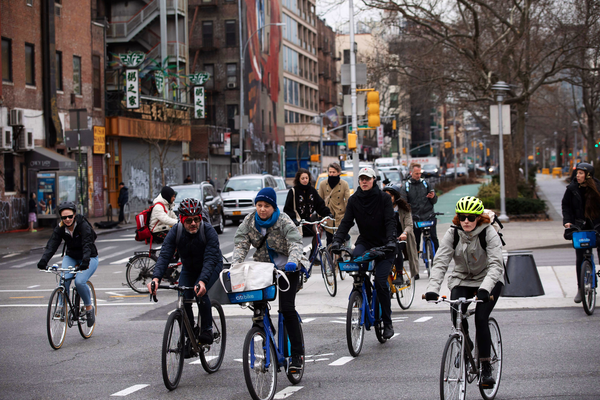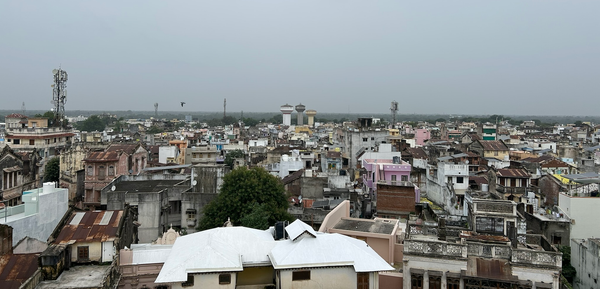How much does that delivery really cost?
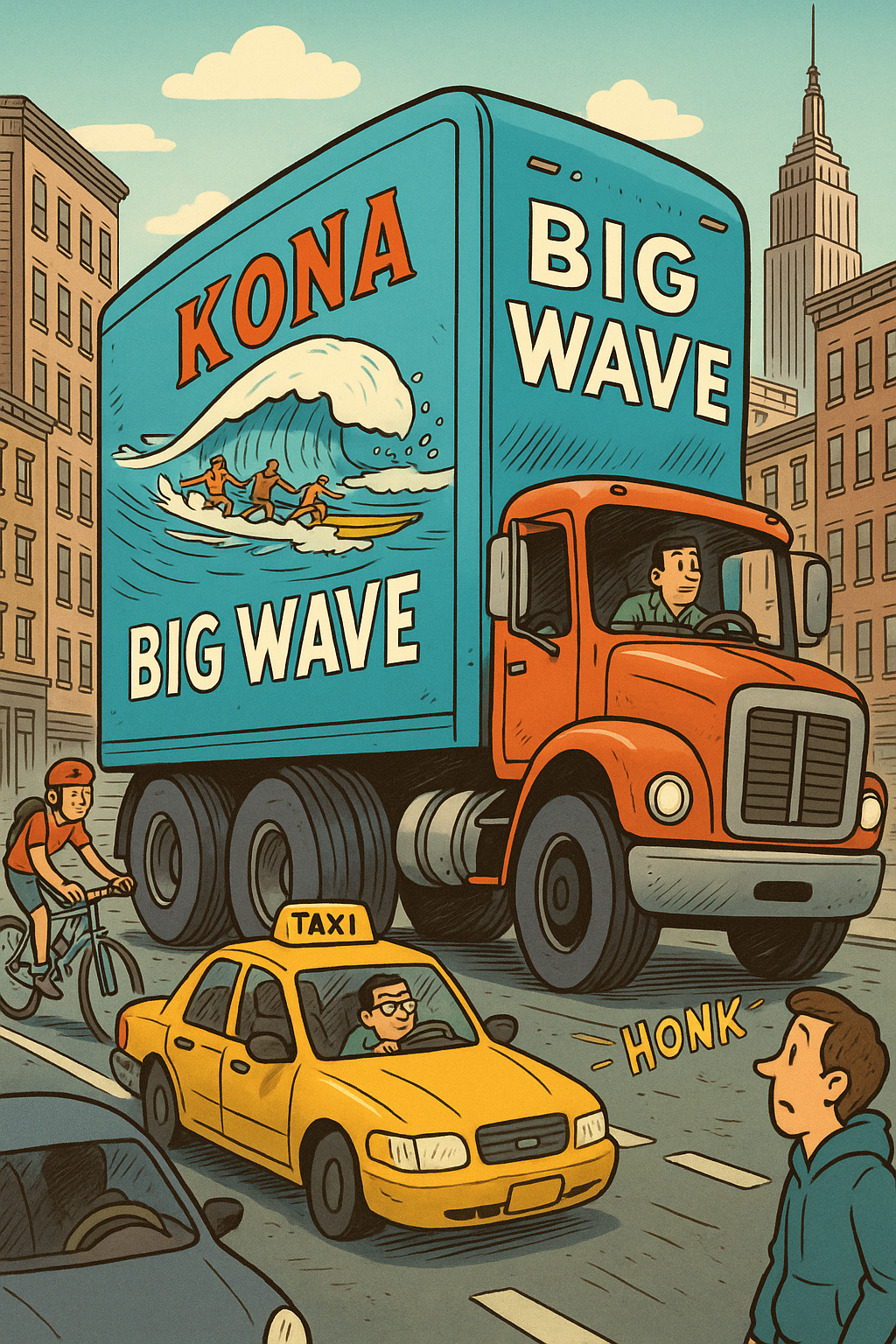
You've already noticed the enormous delivery trucks on New York's streets—they're too big to miss. 🙃
Deliveries and cargo are essential to modern life. Whether it's construction material, store inventory, restaurant supplies or a package you ordered online, it reaches its destination through a complex network that connects global supply chains to the city curb.
But in New York, the "last mile" often verges on the absurd. The post office still delivers on foot. Amazon has deployed cargo bikes to mixed effect. And yet, most deliveries—UPS, FedEx, fruit, beer, you name it—still rely on massive trucks that park in traffic lanes, idle for hours, and block everyone else.
Just the other day I came across a tractor trailer delivering beer to a restaurant on Seventh Avenue in Manhattan:
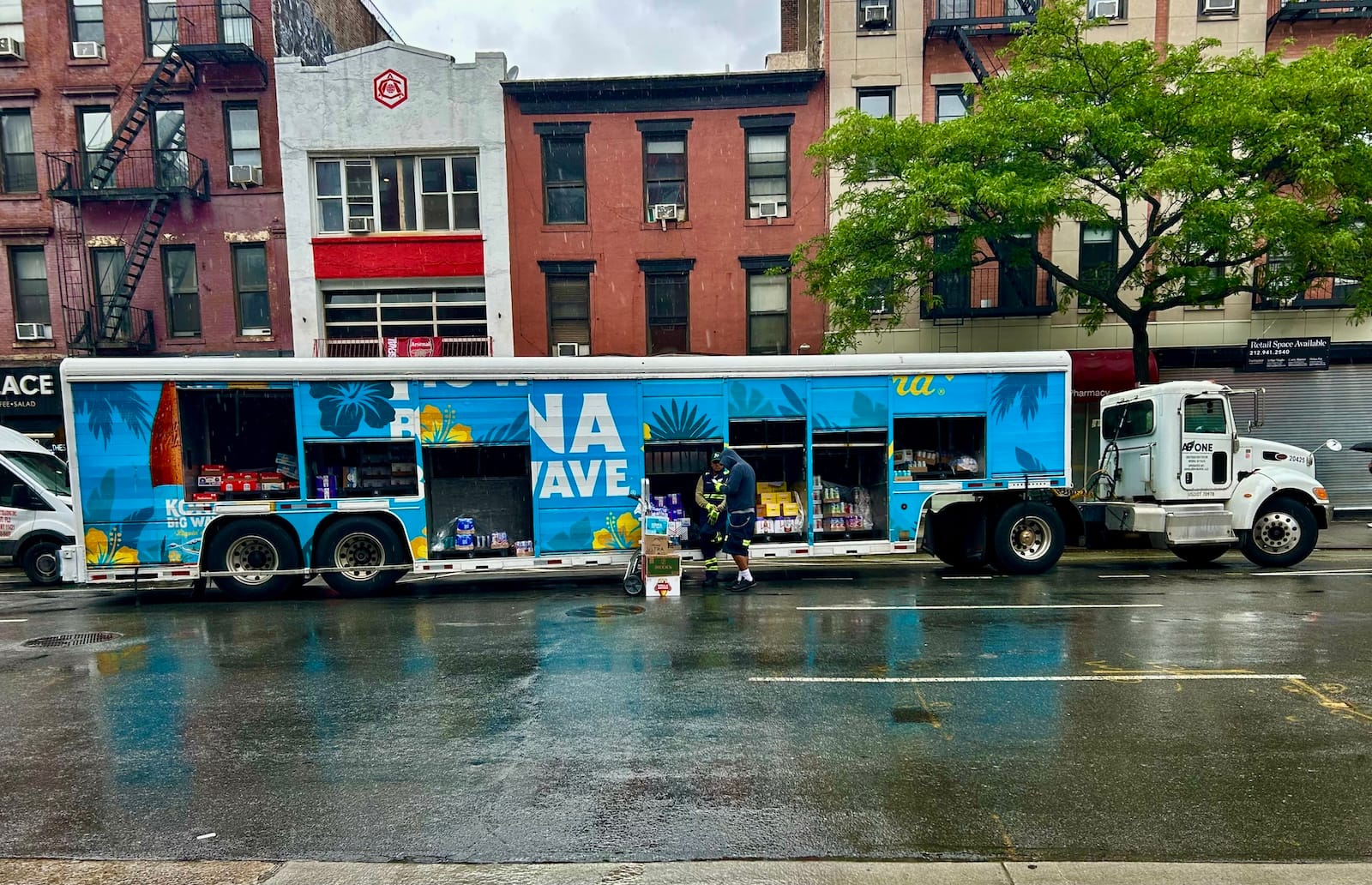
There is no reason that this Kona Big Wave truck needs to occupy two (!) lanes just to deliver some beer. In fact, there is no reason for this truck to be in New York's urban core at all.
How did we get here?
In 2010, the city introduced the Stipulated Fine Program, which gives delivery companies reduced fines in exchange for faster payments. In practice, it's become a license to park illegally.
In 2018, UPS paid $14.4 million in parking fines; FedEx paid $6.8 million. The total amount paid by delivery companies to the city under the program was about $50 million per year.
Assuming around 800 million packages are delivered in New York each year, these fines work out to about six cents per delivery—six cents to park anywhere, anytime.
Meanwhile, a city council report found that this congestion costs New Yorkers about $400 million per year in lost time—eight times the amount of the fines. We all shoulder the cost of an inefficient delivery system, and neither the city (which enjoys the tax revenue) nor the companies making deliveries have had a real incentive to change this.
It doesn't have to be this way
Contrast this with how UPS delivers packages in Paris:
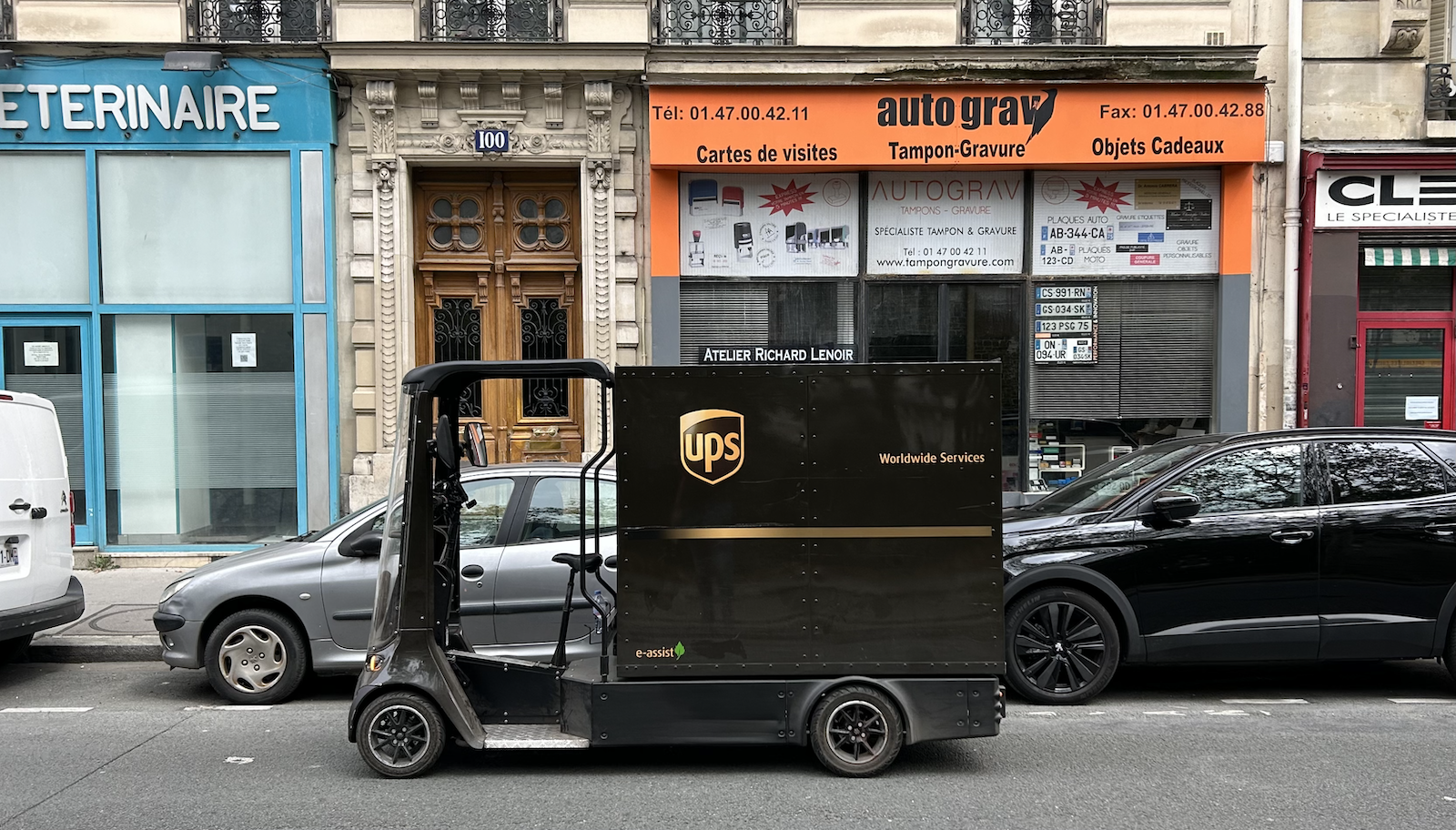
Amazon has been doing this in New York—sometimes using vehicles that technically count as bicycles:
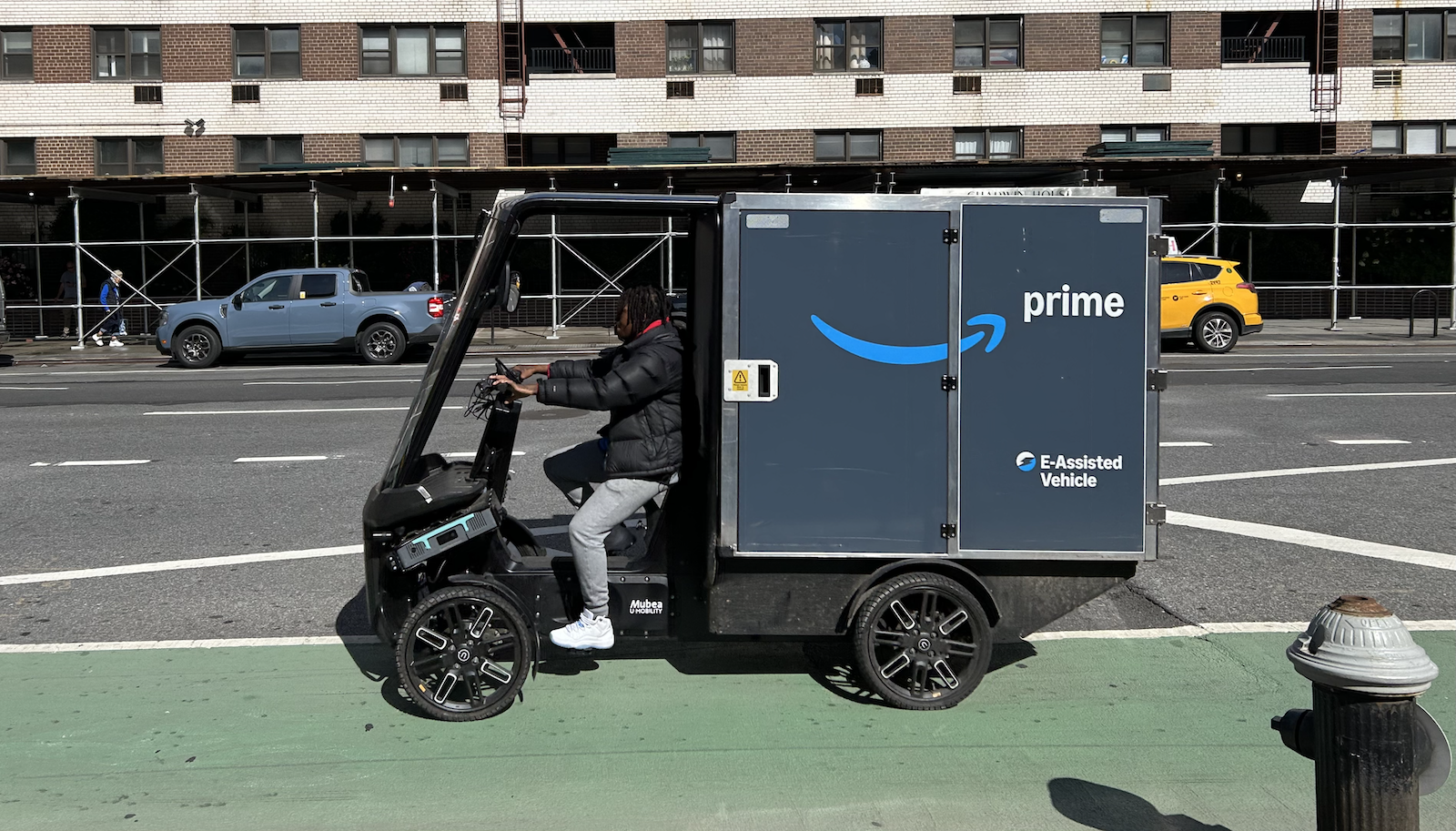
These vehicles don't block lanes, don't emit fumes, and don't require a parking ticket to function.
A smarter delivery system
Whether it's vehicles like these or traditional cargo vans—both a major improvement over the box trucks and tractor trailers parked in the road—the city needs to take control of the situation on behalf of everyone who lives, works, or visits here. Here's how:
- Charge for the real cost of congestion. If UPS's $14M fines became $112M—a number that reflects the actual economic impact—behavior would change overnight.
- Create 24/7 delivery zones on every block. These would serve trucks, vans, and passenger drop-offs. Drivers today who need to stop for a few minutes are typically forced to either park in a fire hydrant or to block a traffic lane—an expensive choice that is bad for everyone.
- Build micro-hubs across the city. These could live in garages (as Manhattan borough president Mark Levine has proposed), repurposed space, or even well-placed parking spots—allowing goods to move from larger trucks to smaller vehicles.
- Update state vehicle laws. New York needs to recognize the importance and relevance of new delivery modes—electric cargo bikes, hybrid micro-vans, and so on—and regulate them sensibly.
The chaos isn’t inevitable—it’s a policy choice. And it’s one we can change.
If other cities can move cargo without blocking crosswalks and bike lanes, so can we. The future of urban delivery is already here—we just need to get out of our own way.
